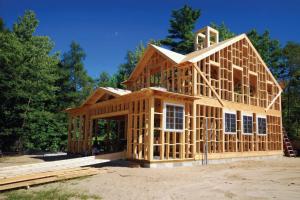Ultimate Guide: How to Build Your Dream House from Scratch

-
Quick Links:
- 1. Understanding Your Needs and Goals
- 2. Setting a Budget
- 3. Choosing the Right Location
- 4. Designing Your Home
- 5. Obtaining Necessary Permits
- 6. Preparing the Site
- 7. Foundation and Framing
- 8. Installing Systems (Electrical, Plumbing, HVAC)
- 9. Finishing Work (Interior and Exterior)
- 10. Final Inspection and Moving In
- 11. FAQs
1. Understanding Your Needs and Goals
Building a house is a significant endeavor that requires careful planning and consideration. Start by determining your long-term goals. Are you building a family home, a vacation retreat, or an investment property? Understanding your needs will help guide your decisions throughout the process.
Case Study: The Johnson Family
The Johnson family wanted a sustainable home that would accommodate their growing family. They focused on energy efficiency and eco-friendly materials, which shaped their decisions throughout the building process.
2. Setting a Budget
Establishing a clear budget is crucial to avoid overspending. Consider all aspects, including land costs, construction materials, labor, and interior finishes. It’s advisable to add a contingency of 10-20% to your budget for unexpected costs.
Tips for Budgeting
- Research average costs in your area.
- Get multiple quotes from contractors.
- Prioritize essential features and finishes.
3. Choosing the Right Location
The location of your new home is as important as the design itself. Look for areas that fit your lifestyle, access to amenities, schools, and future development potential. Check local zoning laws and regulations to ensure your plans align with city requirements.
4. Designing Your Home
Your home design reflects your personal style and functional needs. Collaborate with an architect or use home design software to create blueprints. Consider future needs, such as additional rooms or modifications for aging in place.
Popular Home Styles
- Modern
- Traditional
- Craftsman
- Ranch
- Contemporary
5. Obtaining Necessary Permits
Before you start construction, you must secure the necessary permits from your local government. This process can vary widely, so it’s essential to check with your local building department to understand requirements specific to your area.
6. Preparing the Site
Once permits are secured, prepare your site for construction. This includes clearing the land, leveling the ground, and marking the layout according to your building plans.
7. Foundation and Framing
The foundation is one of the most critical elements of your home. It must be built to support the structure. Common types of foundations include slab, crawl space, and basement. After the foundation, framing begins, which outlines the shape and structure of your home.
Foundation Types
| Type | Description |
|---|---|
| Slab | A flat concrete slab poured on the ground. |
| Crawl Space | A raised foundation allowing access for plumbing and electrical. |
| Basement | A full story below ground level, offering additional space. |
8. Installing Systems (Electrical, Plumbing, HVAC)
With the frame in place, it's time to install essential systems. Ensure you hire licensed professionals for electrical, plumbing, and HVAC installations to comply with local codes and standards.
9. Finishing Work (Interior and Exterior)
This stage includes installing drywall, painting, flooring, and adding fixtures. Exterior work involves siding, roofing, landscaping, and driveways. These elements significantly influence your home’s aesthetics and functionality.
10. Final Inspection and Moving In
Once construction is complete, a final inspection ensures everything meets code requirements. After passing inspection, you can move in and start enjoying your new home!
FAQs
1. How long does it take to build a house?
The average time for building a house can range from 6 to 12 months, depending on the home’s size and complexity.
2. What is the average cost to build a house?
Costs vary widely based on location but can range from $100 to $200 per square foot.
3. Do I need an architect?
While not mandatory, hiring an architect can help you create a functional and aesthetic design that meets your needs.
4. Can I build my own house?
Yes, many people choose to act as their own contractor, but it requires a solid understanding of construction processes.
5. What should I include in my budget?
Include land costs, construction materials, labor, permits, and interior finishes in your budget.
6. How can I find a good contractor?
Seek referrals from friends or family and check online reviews. Always interview multiple candidates.
7. What types of foundations can I choose from?
Common options include slab, crawl space, and basement foundations, each with its advantages.
8. What permits do I need?
Permits vary by location but typically include building, electrical, plumbing, and zoning permits.
9. How do I ensure my home is energy efficient?
Consider energy-efficient materials, appliances, and systems during the design and build phases.
10. Can I make changes during construction?
Yes, but changes may lead to delays and additional costs, so it's best to finalize designs before construction begins.
Random Reads
- How to type letters with accents
- How to type pi symbol
- Unlocking epona ocarina of time
- How to test a resistor with a multimeter
- How to tell if airpods pro are charging
- Transfer photos computer to ipad
- How to turn off shortcuts notifications
- How to remove white background microsoft paint
- How to remove whited out
- How to use solver in microsoft excel